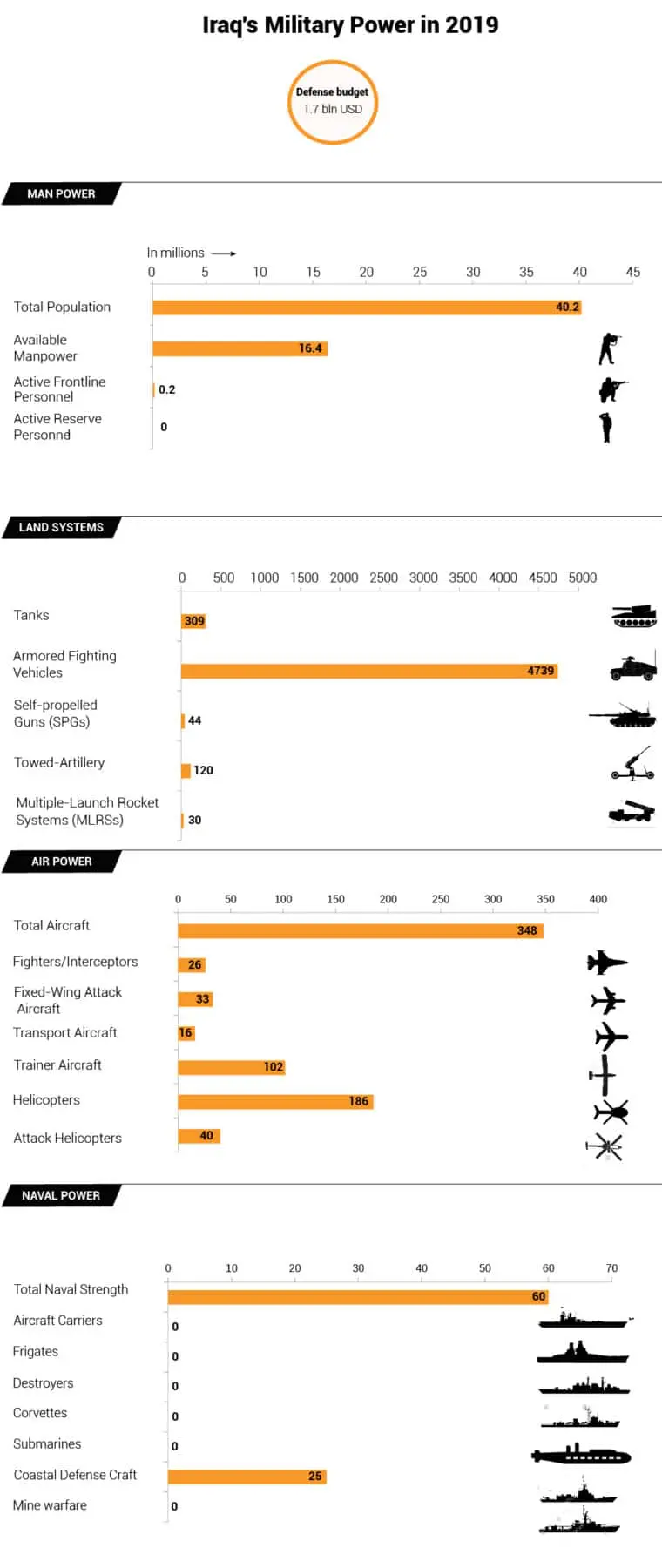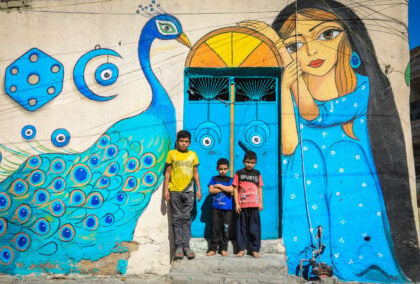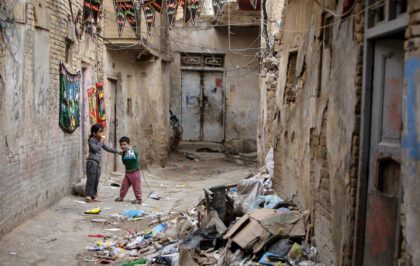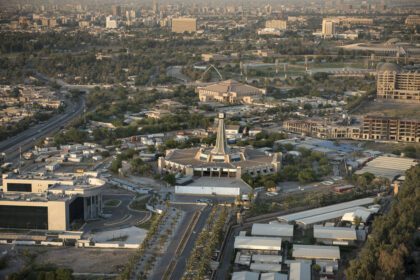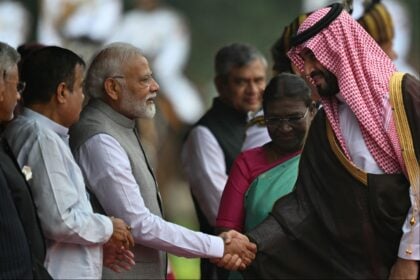
Introduction
A new political system was introduced in Iraq after Saddam Hussein’s regime was brought down in 2003. Based upon a new Constitution, approved on 15 October 2005 by referendum, Iraq is an Islamic, democratic federal republic, consisting of 18 governorates (muhafazat). The Kurdistan Autonomous Region forms part of the Federal Republic Iraq, and is made up of the three northern provinces of Duhok, Erbil (Hewler) and al-Sulamaniya (Silemani). The region is governed by a regional administration, the Kurdistan Regional Government, and has its own armed forces. Article 114 of the Constitution leaves room for the formation of additional autonomous regions. Federal government is organized around a separation of powers – between the Executive, Legislative and Judiciary.
The Executive
The Executive is headed by the President, who is also head of state. The President is elected by a two-third majority of the Council of Representatives, Iraq’s Parliament. The President is elected to serve a four-year term in office, after which he may be re-elected once. The President approves laws which have been passed by Parliament, and is the ceremonial head of the Armed Forces. He also fulfils ceremonial duties for Iraq. The President is aided by two Vice-Presidents. Together they form the Presidency Council, which makes decisions by unanimous vote.
There is also a Council of Ministers, consisting of the Prime Minister and other ministers. After the outcome of the parliamentary general election has been established, the Presidency Council summons the leader of the largest party or political block in Parliament to form a new government. It can assume its responsibilities once a majority in Parliament has adopted a vote of confidence. The Prime Minister chairs the Council of Ministers and thus leads the daily politics of decision-making. They can dismiss a minister, with the support of a majority in Parliament. The Prime Minister is also Commander-in-Chief of the Armed Forces.
The Legislative
The Legislative is formed by the 325 Members of Parliament (Council of Representatives), which is chaired by the Speaker. 317 of the 325 Members of Parliament are chosen in the general elections, which are held once every four years, and in which all Iraqi citizens who are eighteen years of age or older are allowed to participate. The remaining eight seats are reserved for chosen representatives of small minority groups. The Parliament choses the President, and offers a vote of confidence to the Prime Minister and the Council of Ministers (or else issues a motion of no confidence, dismissing the government). It also confirms important appointments, is responsible for the budget, submits and assesses laws, and ratifies treaties.
A Federation Council is also in place, alongside Parliament. On paper it is made up of representatives from the regions and governorates that are not separately organized, but it is not in force, as yet. The council is controlled by the Council of Representatives.
The Political Parties
Iraqi National Accord: also known as the National Reconciliation Movement, this party was founded in 1990 and led by former prime minister Ayad Allawi. It is considered a liberal party that seeks political action far from sectarian quotas. It was among the opposition groups that formed the Iraqi National List (INL), which won the majority of parliamentary seats in the 2010 elections. In the 2014 elections, and after the dissolution of the INL, the Iraqi National Accord entered into a new coalition called the National Coalition (Wataniya), taking 21 seats.
Islamic Dawa Party: led by Nouri al-Maliki, who was prime minister from May 2006 to September 2014, and contains within its ranks the current Prime Minister Haider al-Abadi. It was one of the component parties of the State of Law Coalition, which came second in the 2010 elections with 89 of the 328 available seats, and subsequently dominated the 2014 elections, winning 94 seats.
The Sadrist Movement: a political and religious movement headed by the Shia cleric Muqtada al-Sadr, and indirectly representing the militia groups Mahdi Army, the Promised Day Brigade and the Peace Companies. The al-Ahrar Bloc, a Shia coalition of which the movement was part, took 33 seats in the 2014 elections.
The Patriotic Union of Kurdistan (PUK): a liberal, secular party led by former president Jalal Talabani. The party describes its goals as self-determination, human rights, democracy and peace for the Kurdish people of Kurdistan and Iraq. In the 2010 elections, PUK and the Kurdistan Democratic Party (KDP) formed the Kurdistan Alliance, coming in fourth place with 43 seats. In the 2014 elections, PUK, running independently of the KDP, obtained 19 seats.
Kurdistan Democratic Party: has a wide presence among the Kurdish clans, and is led by Masoud Barzani, the president of Iraqi Kurdistan. The party seeks to secure the right of the Kurds to self-determination, to develop a federal-parliamentary system and to guarantee the participation of Kurds in political decision-making through representation in federal institutions. The KDP won 19 seats in the 2014 elections.
The Judiciary
The Judicial is made up of the Higher Judicial Council, the Supreme Court, the Court of Cassation, the Public Prosecution Department, the Judiciary Oversight Commission, the Central Criminal Court, and other federal courts, each with their own powers.
The legal system is based on a mixture of civil and Islamic law. In practice, the functioning of the political system, which came into being after 2003, is far from perfect. In fact, in many repects Iraq might be termed a dysfunctional state.
The Military
Introduction
Despite defeating Islamic State militants, with assistance from Western powers and military advice from Iran’s elite al-Quds brigade, peace continues to elude the oil-rich nation of Iraq. Post-conflict, questions remain about the long-term shape of the country’s armed forces, particularly the Shia-dominated Popular Mobilization Units and the role of Kurdish forces.
In 2019, Iraq ranked 53 out of 137 countries included in the annual GFP review. That year, the number of people who reached military age was estimated at 664,169 personnel, while military expenditure was estimated at $6.1 billion. In 2018, military expenditure accounted for 2.7 per cent of GDP, compared with 3.8 per cent in 2017 and 3.5 per cent in 2016, according to the Stockholm International Peace Research Institute.
In May 2003, the Coalition Provisional Authority dismantled the Iraqi military and sent home its personnel, a move widely considered unwise. With time to spare and with their military expertise the disbanded military provided a large pool of insurgents.
| Index | Number | Rank out of 137 |
| Total military personnel | 165,000 | - |
| Active personnel | 165,000 | - |
| Reserve personnel | 0 | - |
| Total aircraft strength | 327 | 32 |
| Fighter aircraft | 26 | 49 |
| Attack aircraft | 59 | 41 |
| Transport aircraft | 24 | 31 |
| Total helicopter strength | 179 | 26 |
| Flight trainers | 78 | 35 |
| Combat tanks | 309 | 53 |
| Armoured fighting vehicles | 4,739 | 15 |
| Rocket projectors | 30 | 50 |
| Total naval assets | 60 | - |
Iraq’s military strength in 2019. Source: GFP review.
In place of the armed forces that had fought for Saddam Hussein against Iran, the American-led coalitions, and against large parts of the Iraqi population, a politically neutral military was envisioned.
From 2003 American advisers, mostly private contractors, trained the Iraqi armed forces from scratch, until 2011, when the last American troops left the country. According to the British International Institute of Strategic Studies (IISS), the army alone has nearly 300,000 troops under its command, augmented by more than half a million police and government militia.
These troops had their baptism of fire in 2008. The year before, the British occupation forces had left the southern city of Basra, leaving a power vacuum that was quickly filled by radical Shiite militia groups, such as the Iranian-influenced Mahdi Army of cleric Muqtada Sadr, and by lawlessness in general. With British and American air and artillery support and provided with ample intelligence on Mahdi Army positions, in particular, Iraqi forces subdued the armed opposition and restored order within weeks.
The Collapse
The collapse of the Iraqi armed forces in Mosul in 2014 against combatants of the Islamic State (IS) is in stark contrast with the relatively muscular image the regular troops had built up previously. It was reported that the personnel of two Iraqi divisions, some 15,000 men, changed into civilian clothes and fled, when confronted with some 800 IS men. Hundreds were captured by IS and summarily executed. The Iraqi Army left equipment and supplies behind.
The main reason for this collapse is generally considered to have been poor leadership, the lack of training and glaring deficiencies in equipment, such as lack of artillery and air support, but especially the army’s low morale. Sunni units just did not want to fight for the Shiite-dominated government, and Shiites did not want to fight for Sunni towns. Corruption is rife. Although a large amount of Gulf War-era materiel was kept in service, a large-scale modernization plan was initiated.
T-72 Tanks were bought from Hungary, and armoured personnel carriers were provided by Switzerland and Ukraine.
The United States provided the most equipment, some of it sold to the Iraqi government, and other materiel was left behind by withdrawing American occupation forces, such as ‘up-armoured’ Humvees and assorted Mine Resistant Ambush Protected (MRAP) vehicles.
One of the most notable ‘big ticket’ items was the US M1 Abrams tank, of which the Iraqi Army was supposed to receive a total of 320. In October 2014, fewer than two hundred have been delivered, and it is doubtful whether the rest of the order will materialize, given the shaky morale of the government troops. IS has paraded and used captured Abrams tanks.
The Iraqi air force was once a large and capable organization equipped with relatively modern Russian and French fighter-bombers. After more than a hundred aircraft fled the allied onslaught in the first Gulf War in 1991, seeking refuge in Iran, it became a hollow force with little flying equipment and even less operational training.
After the American-led invasion of 2003 the remaining fighters, such as MiG-25s, were found to have been buried in the sand in quiet corners of their airbases, waiting for better times.
During the American occupation, Iraqi air space was defended by US aircraft based in the country to give air support to ground operations against insurgents.
When the American troops left the country, the air component of the Iraqi armed forces consisted only of helicopters, mostly Russian, and some US-made Cessna Caravans armed with Hellfire missiles.
There is interest in acquiring additional, more capable aircraft and helicopters, such as the South-Korean KAI T-50 light-attack jet, of which two dozen were ordered, Serbian Utva Lasta turboprop trainer/light attack aircraft, and Russian Mil Mi-35 gunships. A deal for Boeing AH-64 Apache helicopters fell through after the Iraqi government apparently ordered Mil Mi-28 Havoc helicopter gunships from Russia instead. The first Havocs have already been delivered.
In June 2014 the first of an order of 36 F-16 fighter-bombers was handed over to the Iraqi air force. In the following November the date for initial operational capability remains unclear.
Another curious chapter was opened when then-prime minister Nuri al-Maliki declared in June 2014 that his country had bought Su-25 ground-attack aircraft from Belarus and the Russian Federation in order to stop IS convoys on their way to Baghdad and the Shiite south of Iraq. Also, Iranian Su-25 planes were seen on an Iraqi air base near the capital, Baghdad. Ironically these could have originated in Iraq, when some of these had sought refuge in neighbouring Iran in 1991.
The Iraqi navy, the smallest of the armed sevices, has also seen some modernization, after most of the equipment was lost or damaged between 1991 and 2003. The navy had always been modest, as the Iraqi coastline measures only some sixty kilometres. In 2014 the single Iraqi naval base at Umm Qasr is being modernized under the supervision of the US Army Corps of Engineers, with the construction of, among other things, a pier and seawall.
The inventory of vessels is being upgraded as well, after the onslaught of 2003 and preceding allied bombardments that turned most vessels into sunken hulks. The Iraqi navy currently operates four Italian-made 54-metre patrol vessels, five Chinese-built Predator-class patrol boats, and some thirty small US-built Defender rigid-hull inflatable boats (RHIBs). The Iraqi navy also took delivery of a dozen American new-built Swiftship patrol boats, the last in 2014.
Latest Articles
Below are the latest articles by acclaimed journalists and academics concerning the topic ‘Politics’ and ‘Iraq’. These articles are posted in this country file or elsewhere on our website:


